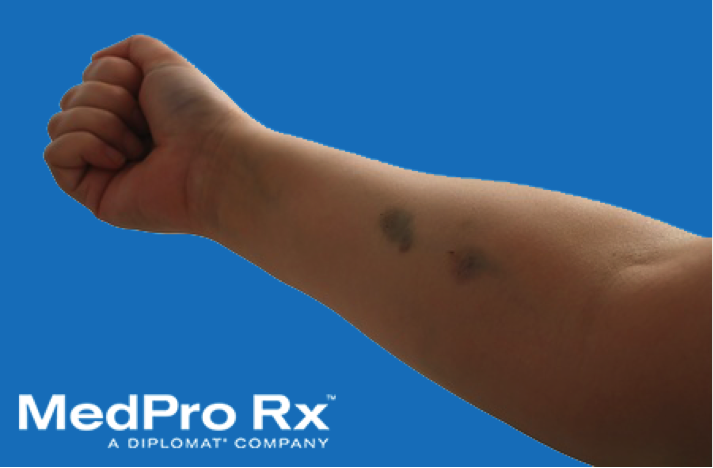You’ve got your prophylactic infusion schedule set, and you’re perfectly comfortable self-infusing. You’re exercising regularly, and you’re eating well. In short, you’re taking great care of yourself and managing your bleeding disorder just fine.
But you’ve still got a few bruises from bumping into things, tripping or falling. Hemophiliacs and those with von Willebrand disease bruise more easily than non-hemophiliacs—and though bruises can indicate a bleed that needs to be treated, they also tend to stick around long after you’ve addressed the underlying issue.
Some people with bleeding disorders might wear their bruises as a badge of honor that helps raise hemophilia awareness. Others may prefer to keep their condition private.
What’s a bleeder to do if you want to cover a bruise? We investigated a few options for bruise-concealing makeup. Here, we’ll go over how to use these products and where to get them .
.
BEFORE COVERING A BRUISE, TREAT YOUR BRUISE
Before trying to cover up a bruise, make sure you’ve treated it completely. The organization Hemophilia of Georgia offers a comprehensive overview of steps to treat bleeding-disorder bruises.
NOTE: This article contains recommendations for makeup techniques and products to help diminish the appearance of bruises. It does not contain recommendations for bruise creams or gels. Before using a topical product that contains active ingredients to fade bruises, check with your doctor.
STEP ONE: COLOR CODE
Complementary colors are the secret to hiding bruises and other imperfections in skin. Apricot- and orange-based tones counteract blue and deep purple hues; green tones can hide redness; and lavender helps downplay yellow or green hues.
When choosing a primer, pick a tinted version in a color that complements your bruise. For example, if your bruise is still deep blue-black or purple, reach for this peachy, color-correcting Smashbox foundation primer. If your bruise has faded to greenish-yellow, you’ll want a similar product in lavender.
Blend the primer sparingly over the bruise. You may find it helpful to use a stippling technique, gently dabbing dots of primer with your ring finger or a brush instead of applying a single coat. Allow the layer of primer to dry.
STEP TWO: COVER UP
Now that you have a color-corrected base to work with, blend your regular foundation over the bruise. You should see it begin to match the surrounding, unbruised skin. Be gentle here—you don’t want to disturb the underlying layer of primer.
Top with a light dusting of powder if you’d like. Voila! Your bruise should be virtually invisible to all but the most discerning eyes.

What’s your preferred product for covering up bruises—or do you wear them proudly? Let us know on Facebook.
Medical Disclaimer: The information herein may not be construed as medical advice. The medical information on this site is provided as an information resource only, and is not to be used or relied on for any diagnostic or treatment purposes. It should not be used as a substitute for professional diagnosis and treatment. It is best to obtain medical recommendations from your physician.
